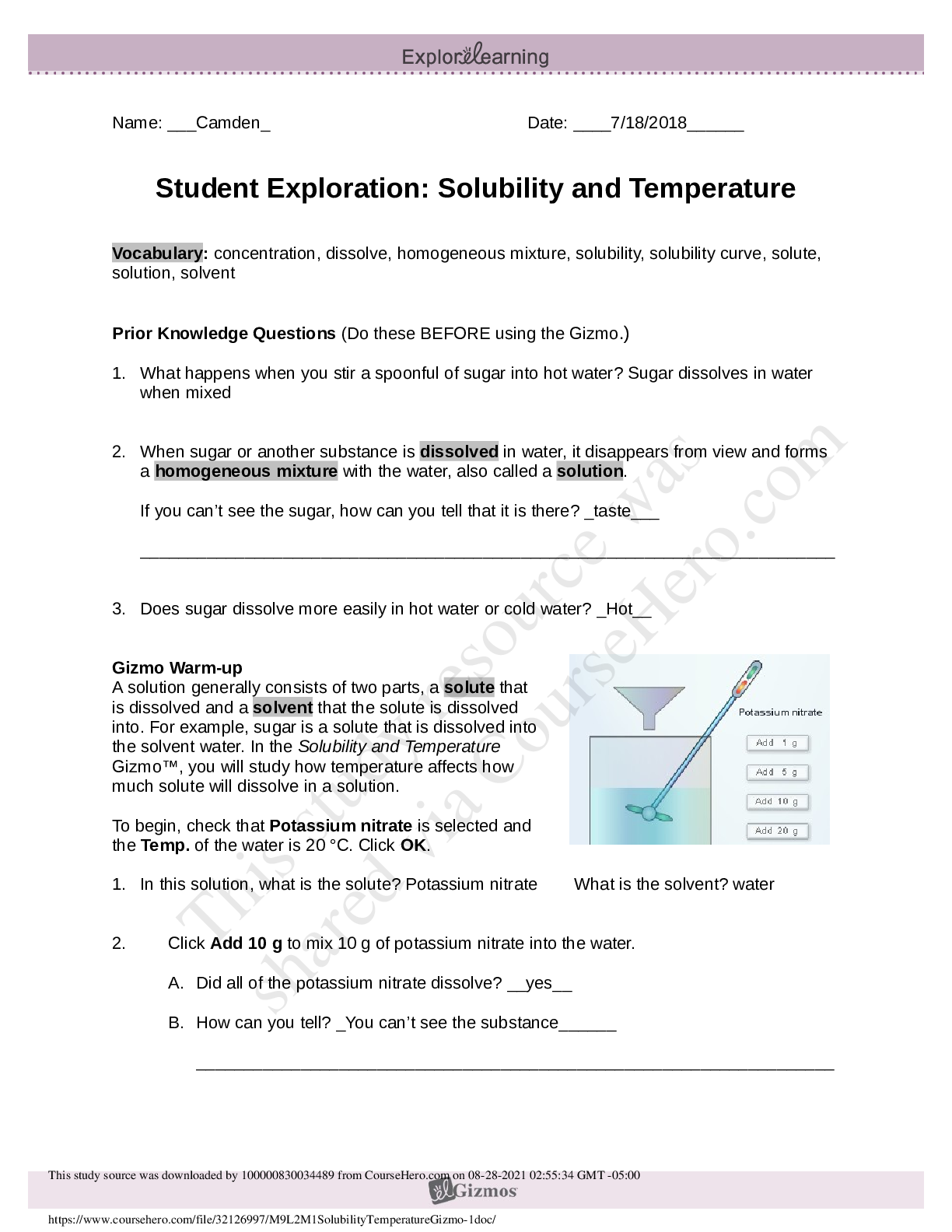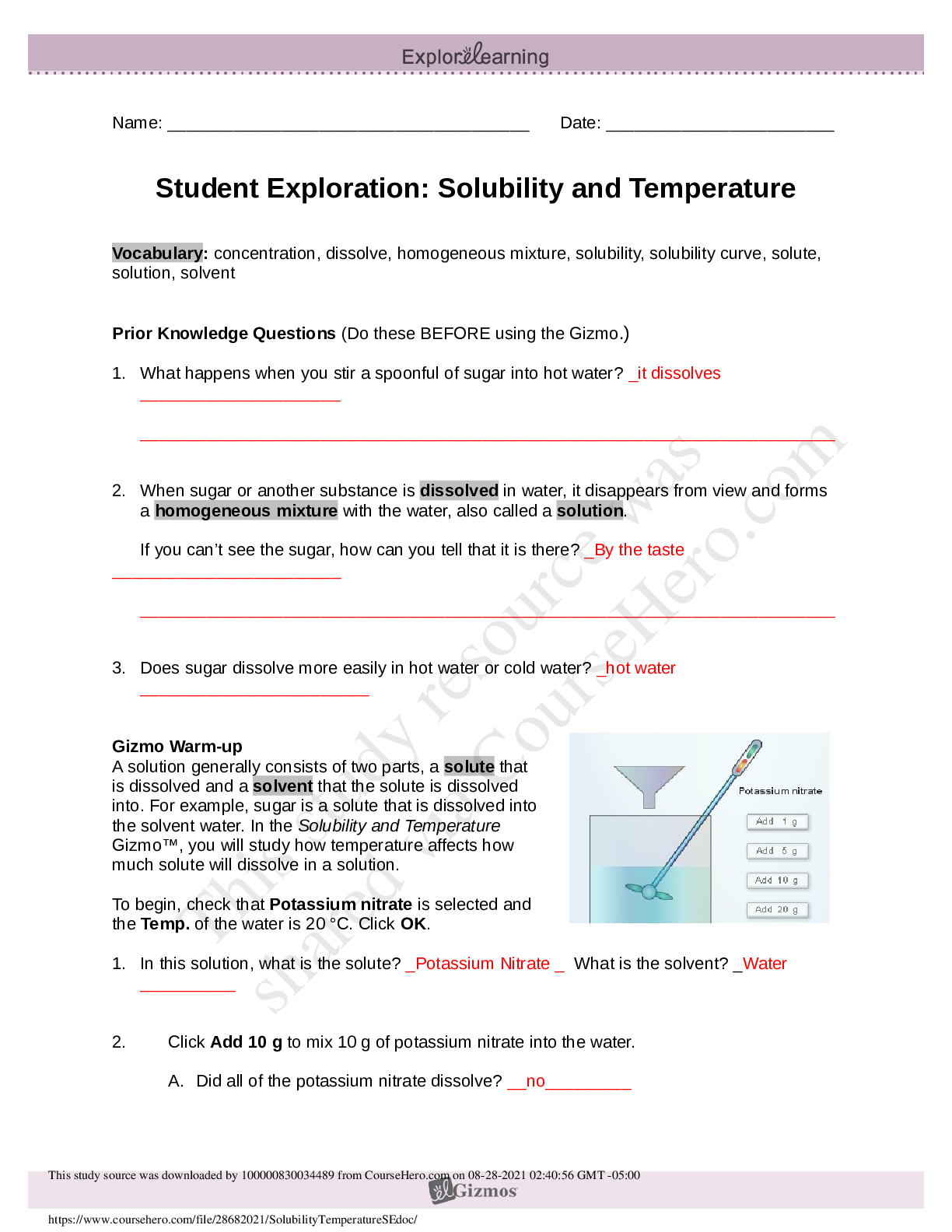SCIENCE 101 > GIZMOS > GIZMO CORAL REEFS 2-BIOTIC FACTORS ALL ANSWERS CORRECT -GRADED A+ (All)
GIZMO CORAL REEFS 2-BIOTIC FACTORS ALL ANSWERS CORRECT -GRADED A+
Document Content and Description Below
Student Exploration: Coral Reefs 2 – Biotic Factors [This lesson was designed as a follow-up to the Coral Reefs 1 – Abiotic Factors lesson. Students should complete that activity before trying ... this one.] Vocabulary (refer to vocab file located on the Gizmo site for definitions): biotic factor, black band disease, invasive species, white band disease Prior Knowledge Questions (Do these BEFORE using the Gizmo.) In 1992, Hurricane Andrew left a wake of destruction through Florida. One victim of the storm was a reptile-breeding facility. Over 900 Burmese pythons were set free, and today thousands of pythons live in Florida. These pythons are an invasive species, or a harmful species not native to the region. 1. What impacts do you think the Burmese pythons might have on local ecosystems? They’ll disrupt the normal food chain 2. In general, why might ecologists be concerned when new invasive species arrive in an ecosystem? It could cause another species to die off in the area Gizmo Warm-up: Like terrestrial environments, coral reefs can be damaged by invasive species. Reefs are also impacted by disease-causing bacteria, humans, and other biotic factors, or living parts of the ecosystem. In the Coral Reefs 2 – Biotic Factors lesson, you will explore how these factors affect coral reefs. 1. On the CONDITIONS tab, select Fishing. Set Net fishing to 50%. Click Advance year 10 times. What changes do you notice on the Coral reef tab? There is almost no fish life in the area 2. On the DATA tab, select every organism. What happens to the reef populations? The long-spined sea urchin, algae, and sponge populations rise and everything else decreases Activity A: Fishing regulation Get the Gizmo ready: • Click Return to original settings and Restart. • On the CONDITIONS tab, check that Fishing is selected. Introduction: Fishing is a major part of many Caribbean economies. The yellowtail snapper and Nassau grouper are important food fishes. However, a lack of adequate regulation has led to overfishing in many areas and consequent damage to reefs. The goals of this activity are to observe the effects of overfishing and determine how much fishing the reef can withstand. Question: What are the effects of fishing on the reef ecosystem? 1. Describe: On the CORAL REEF tab, click on the stoplight parrotfish, queen angelfish, yellowtail snapper, and Nassau grouper. Describe what each of these fishes eat. Stoplight parrotfish: Algae Yellowtail snapper: Young fish, shrimp, crabs, worms Queen angelfish: Sponges Nassau grouper: snappers, angelfish, parrotfish 2. Predict: Set Grouper to 70%. How do you think this level of fishing will affect the populations of the other fish in the simulated reef? Explain your reasoning. I think it’ll cause fish population to increase and everything else decreases 3. Experiment: Select the DATA tab, and check that every species is selected. Click Advance year 10 times. Which fish populations increased, and which fish populations decreased? Decrease: Nassau grouper, stoplight parrotfish, queen angelfish Increase: yellowtail snapper, sponges, 4. Explain: Why do you think the snapper population changed the way it did? I guess the groupers usually ate the yellowtails the most 5. Predict: Click Return to original settings and Restart. Set Snapper to 70%. How do you think this will affect the other fish populations? Explain your reasoning. The nassau grouper population will decrease and then the rest will follow from the grouper decrease (Activity A continued on next page) Activity A (continued from previous page) 6. Experiment: Click Advance year 10 times. What changes occur? Less groupers and yellowtails 7. Explain: Explain the results of the last experiment. Why did the grouper, parrotfish, and angelfish populations rise? Why did the sea urchins decline? How did this affect algae? Snappers commonly ate young fish, maybe it was those types and that made more food for the groupers. Sea urchins and algae decreased because that was what a lot of the reef fish ate 8. Explore: Click Return to original conditions and Restart. Experiment with different levels of Net fishing. Net fishing kills all fish approximately equally. It also can damage delicate corals. For each experiment, run the simulation for approximately 40 years to see the long-term effects on the reef. Summarize the results of each experiment in the table below. Net fishing level Results 20% Not a lot of fish life in the reef anymore. Queen angelfish population went wonky. Grouper, parrotfish, and turtle populations lowered a lot 40% Again not a lot of fish life in the reef. Queen angelfish and sponge populations went stupid. Grouper, parrotfish, and turtle populations went to less than 5 60% Barely any fish life. Queen angelfish populations dropped but then reestablished a little. Parrotfish population was gone within 5 years; turtle, snapper, and grouper populations died within 14 years 80% No fish seen. Queen angelfish, parrotfish, grouper, and turtle populations disappeared within 23 years. All populations are decreasing other than algae 9. Draw conclusions: What level of net fishing can the model reef sustain? Explain. 10-20% for 100 years, one species dies off but if you go to 5%, theres a lot more widespread decrease in population. If you go any higher more fish will die but I think 10% is the ultimate best choice [Show More]
Last updated: 1 year ago
Preview 1 out of 8 pages

Reviews( 0 )
Document information
Connected school, study & course
About the document
Uploaded On
Jun 25, 2021
Number of pages
8
Written in
Additional information
This document has been written for:
Uploaded
Jun 25, 2021
Downloads
0
Views
158


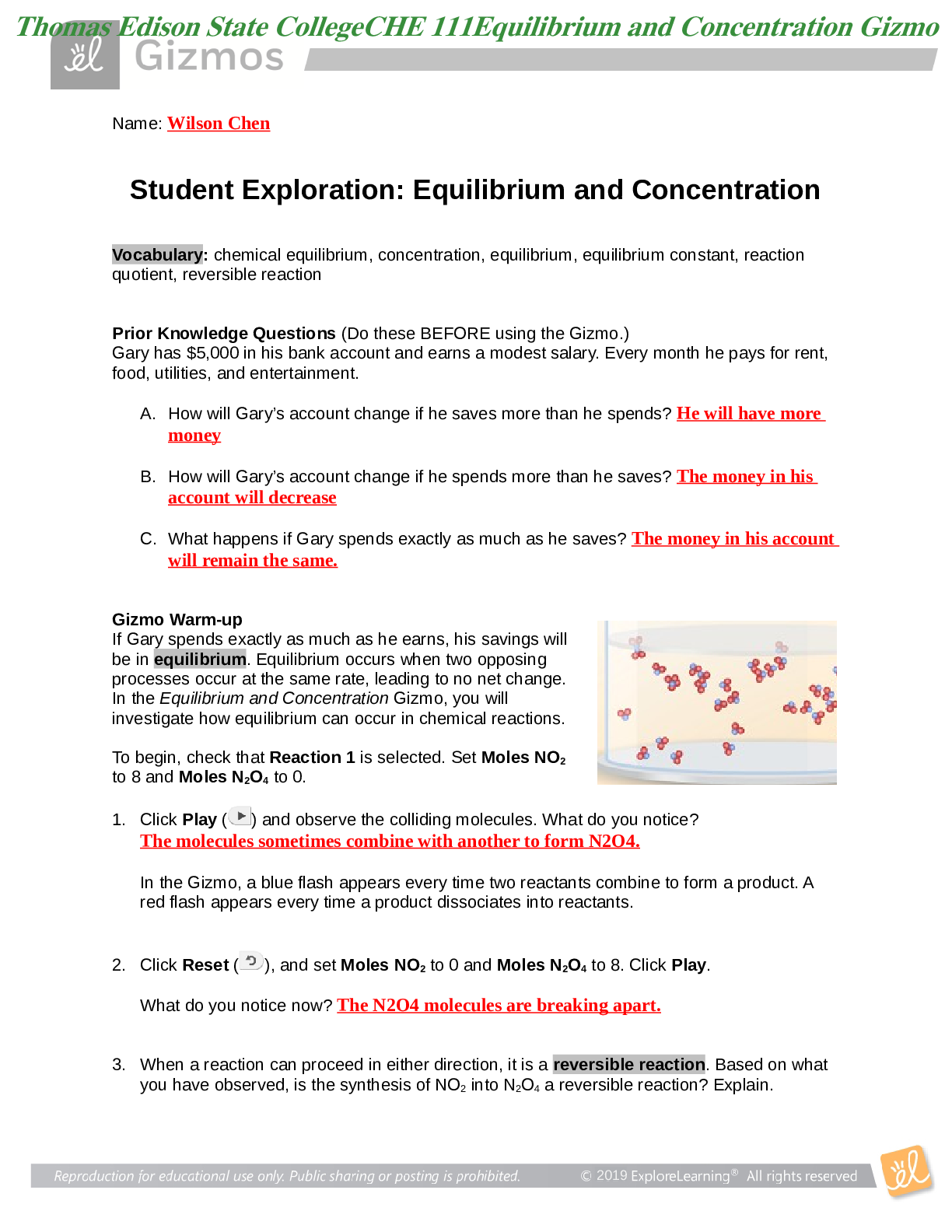
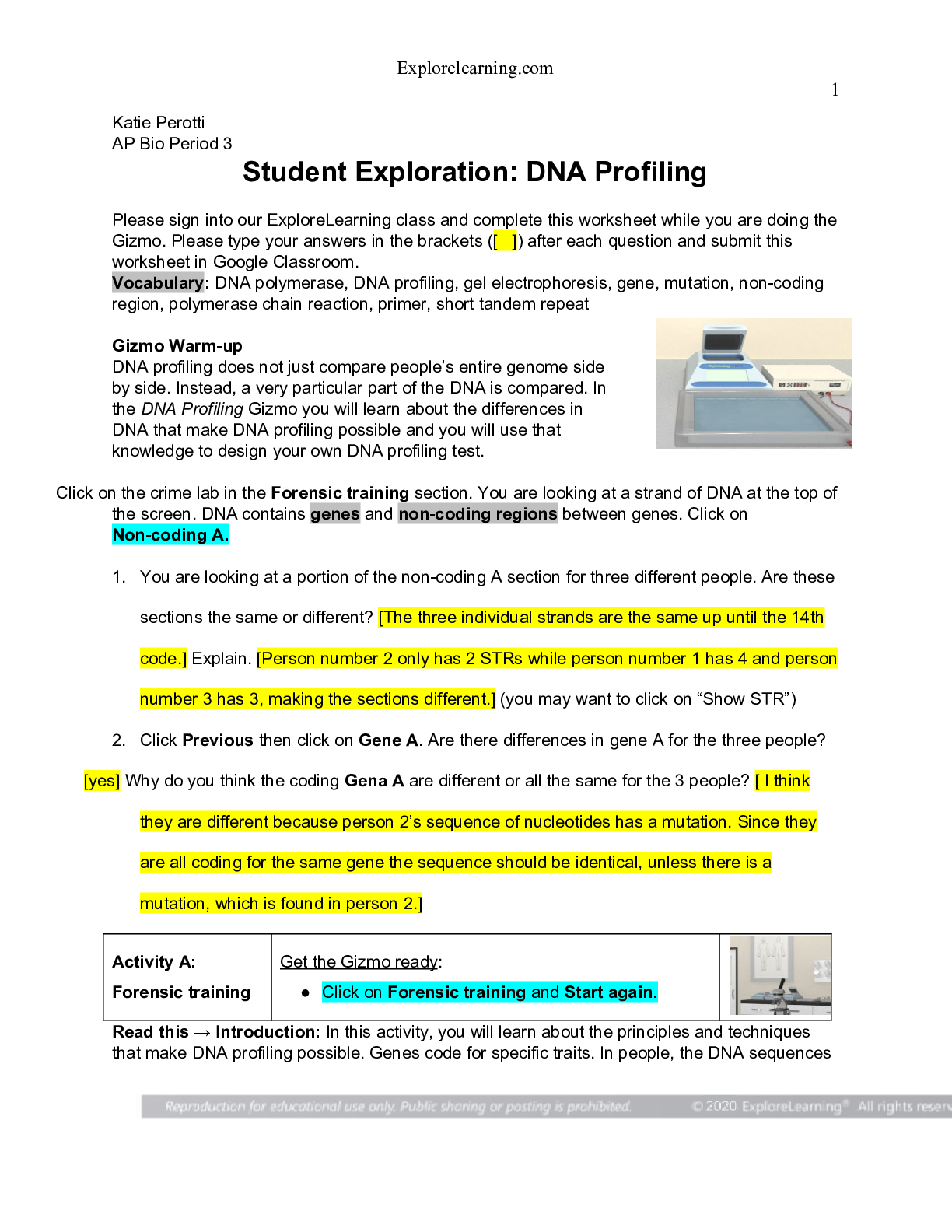


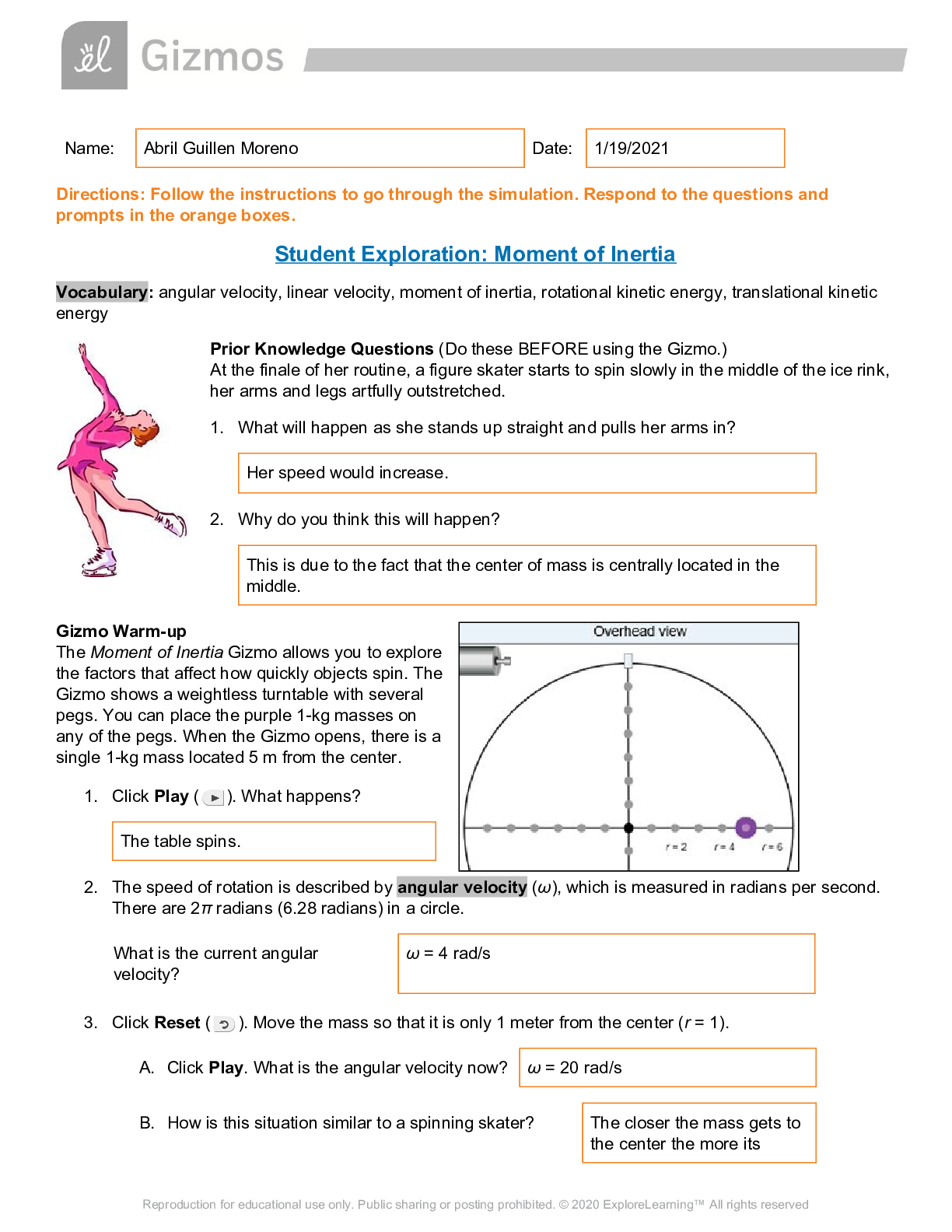

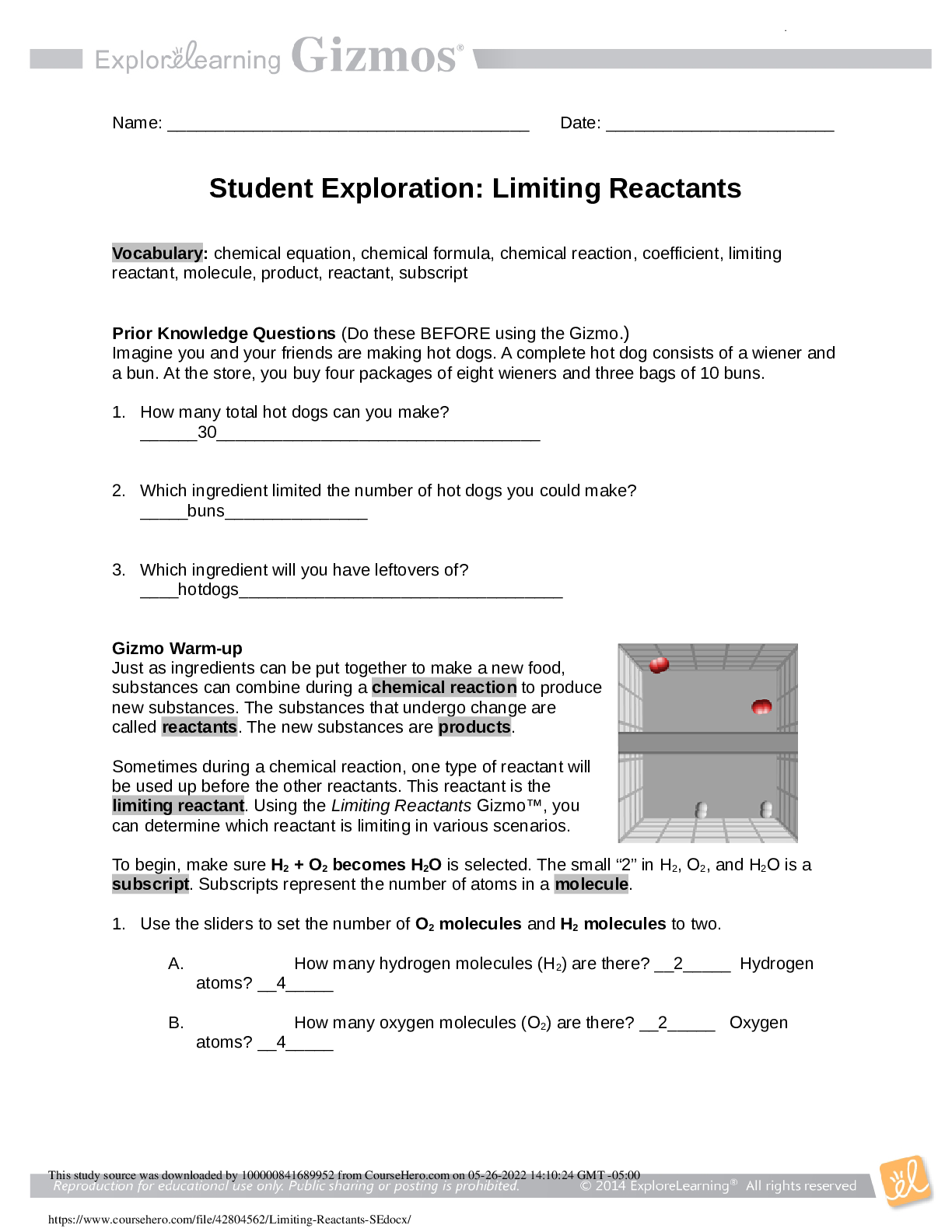
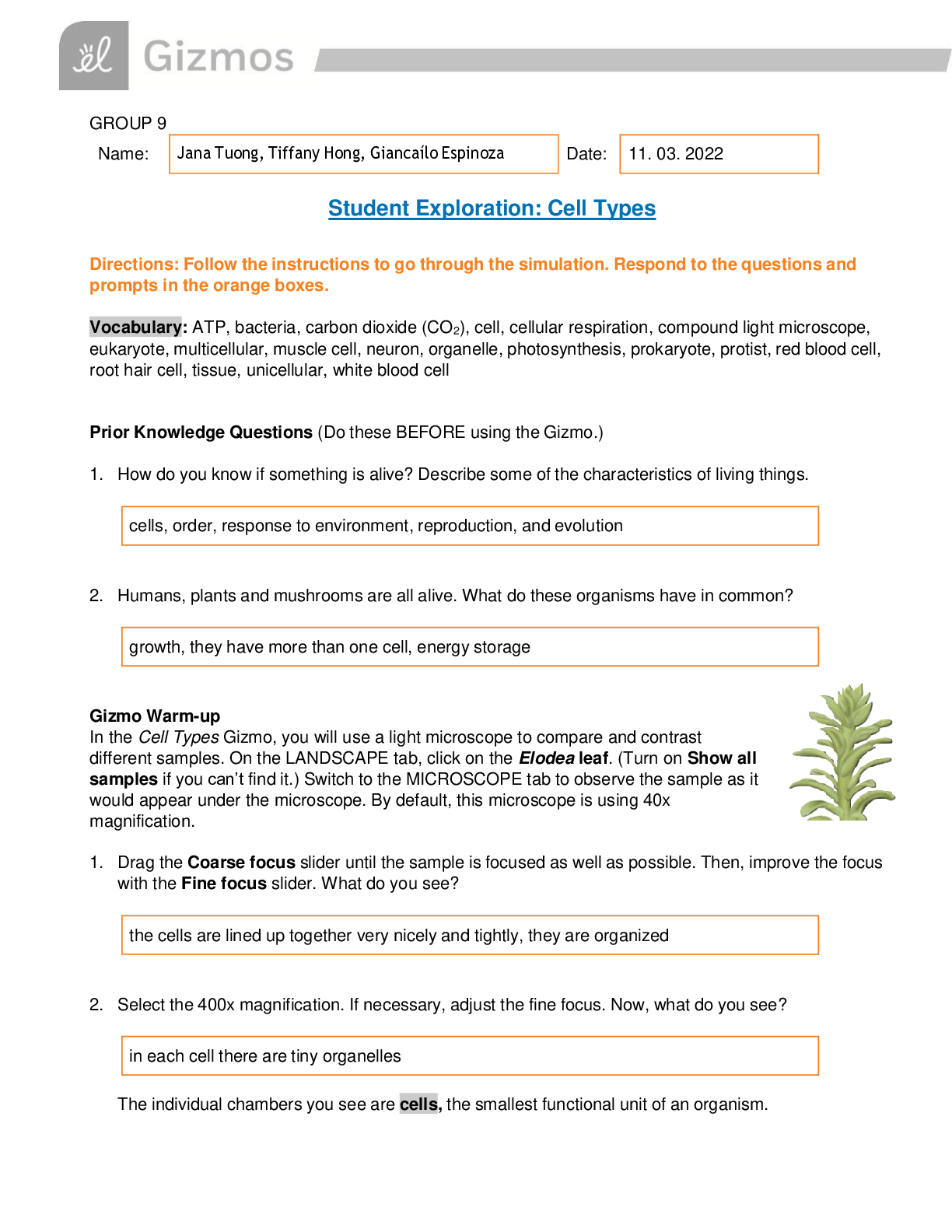

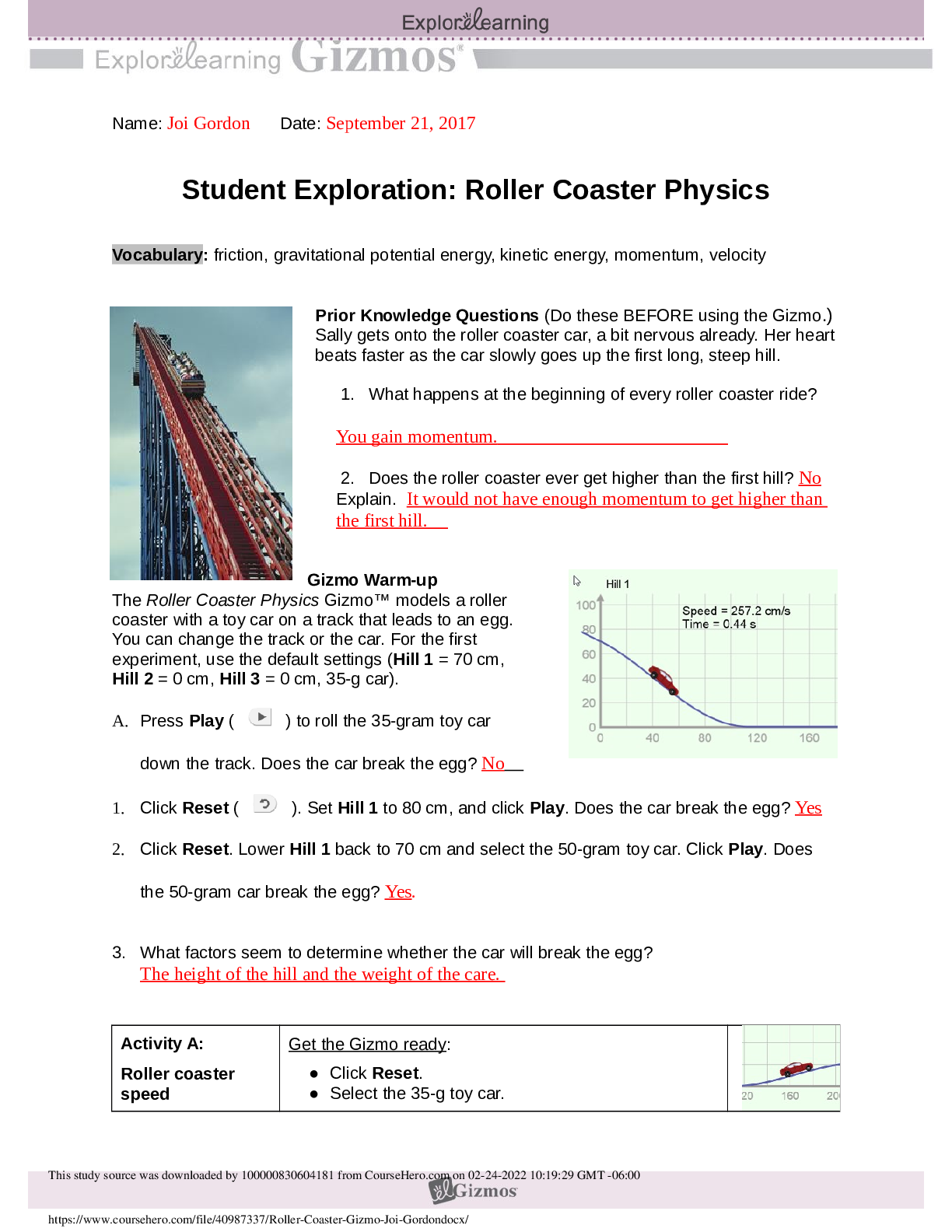
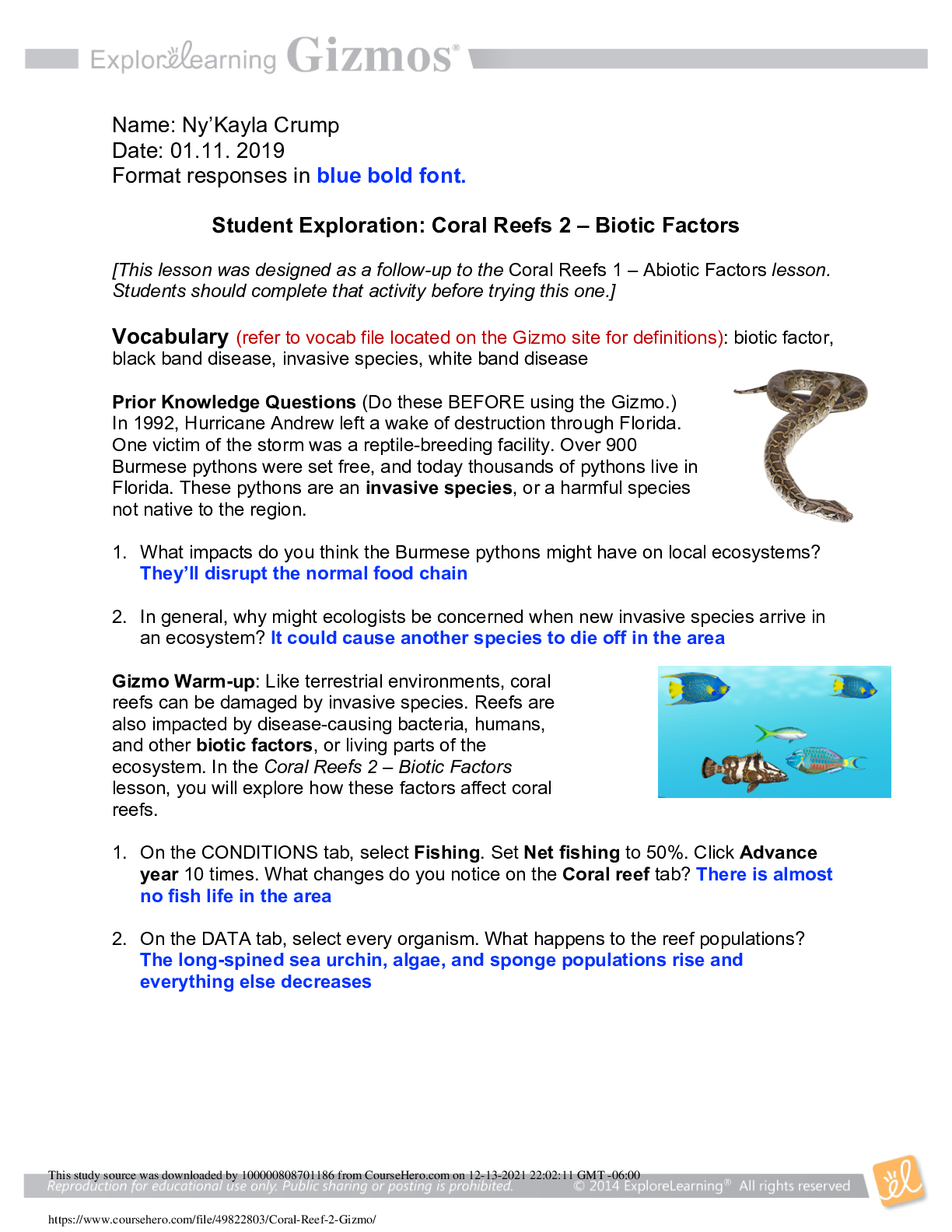
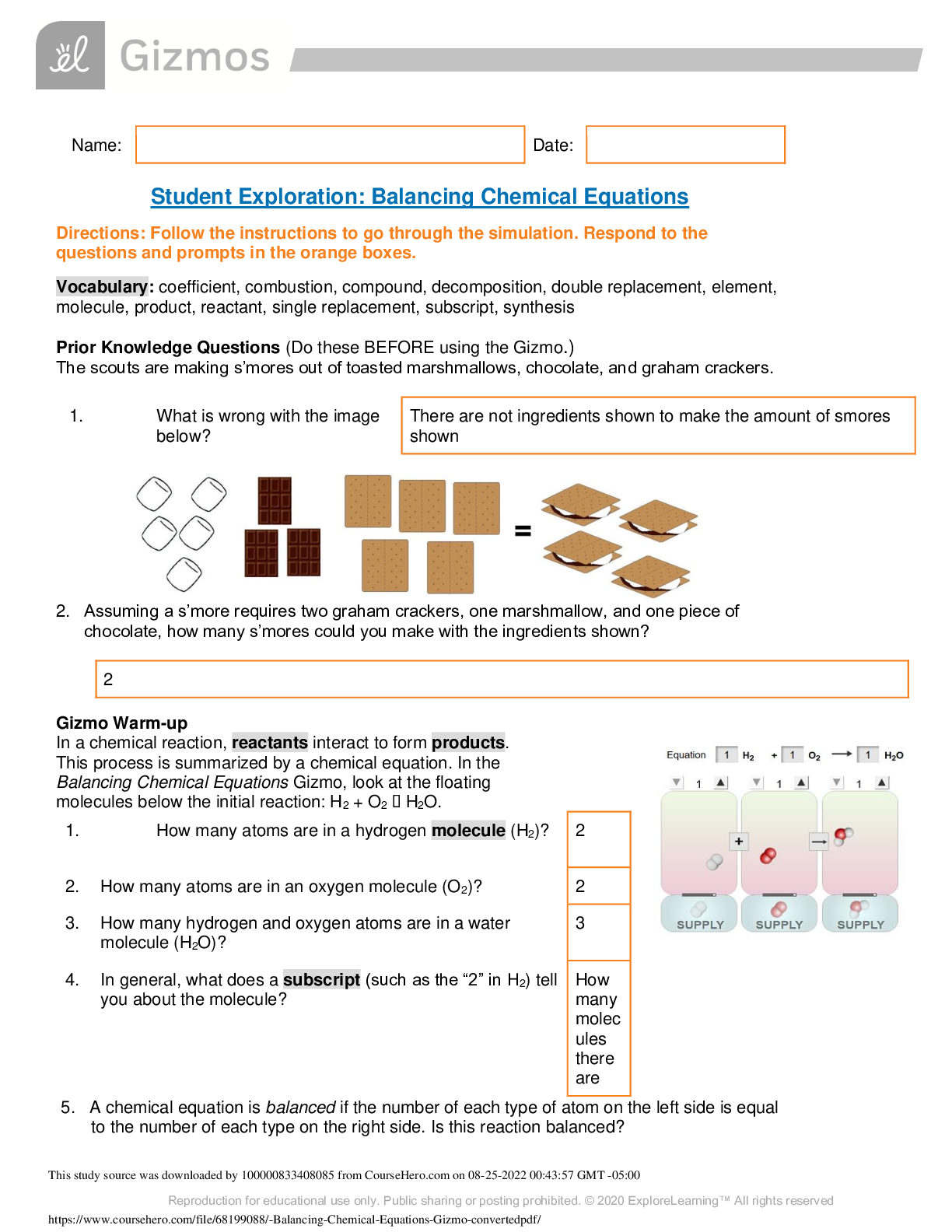
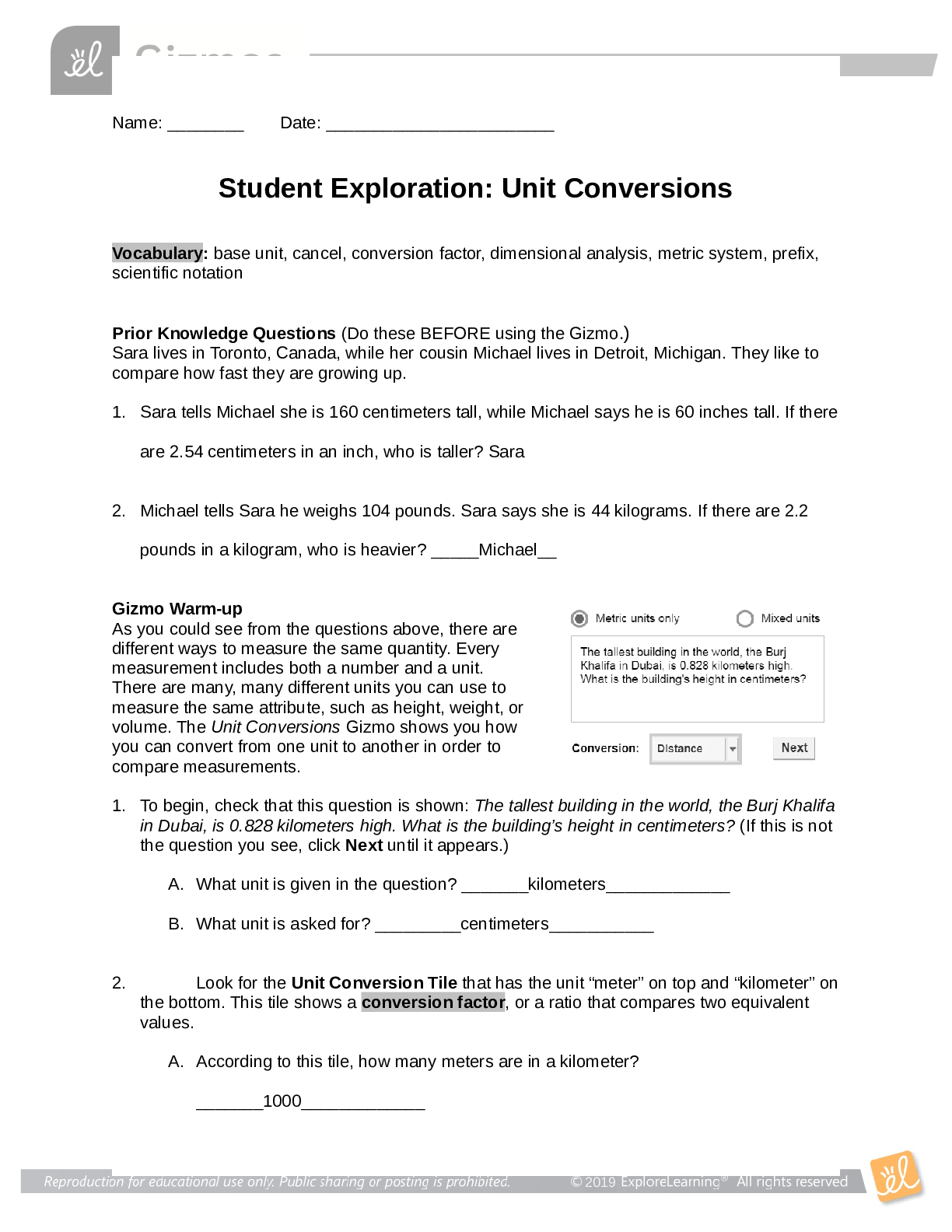

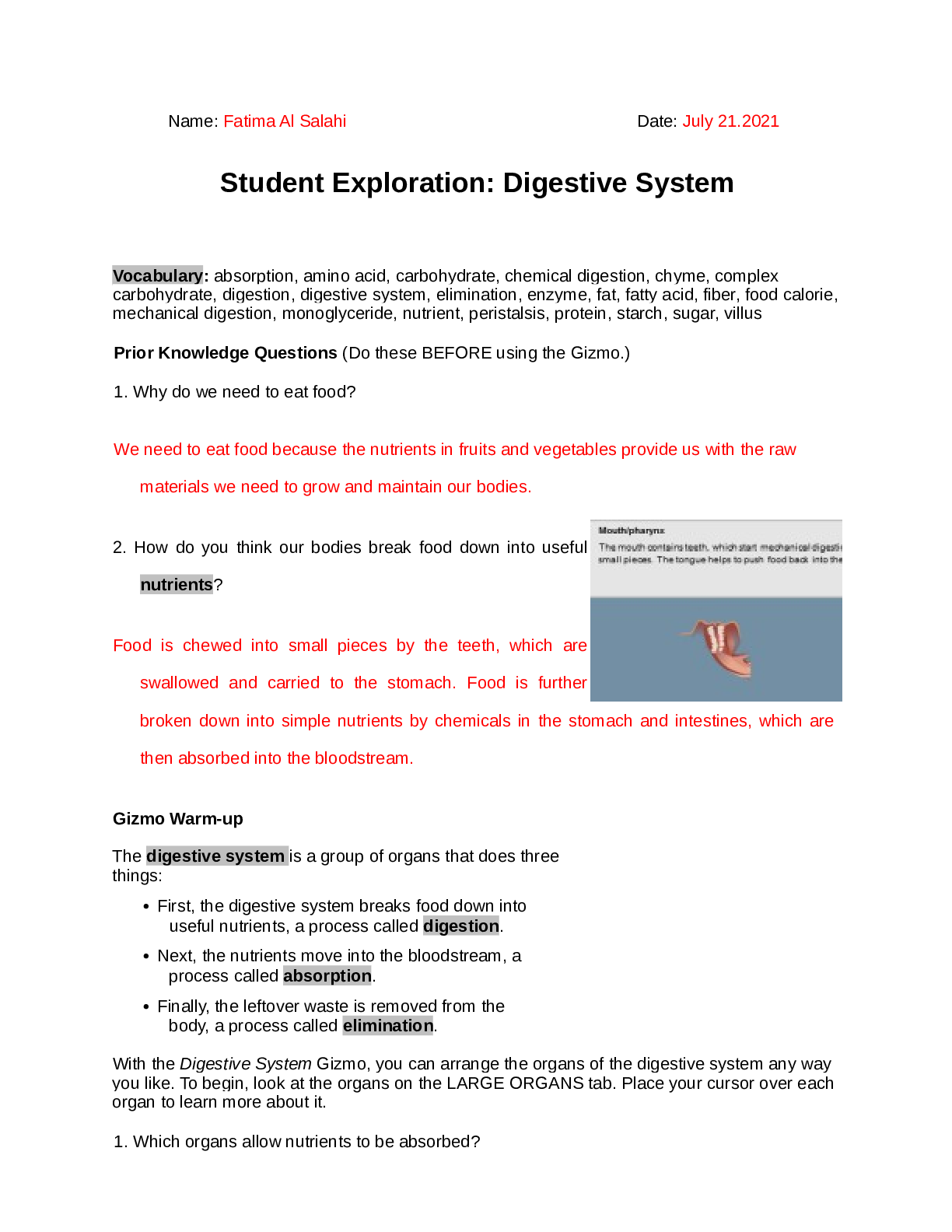
.png)
